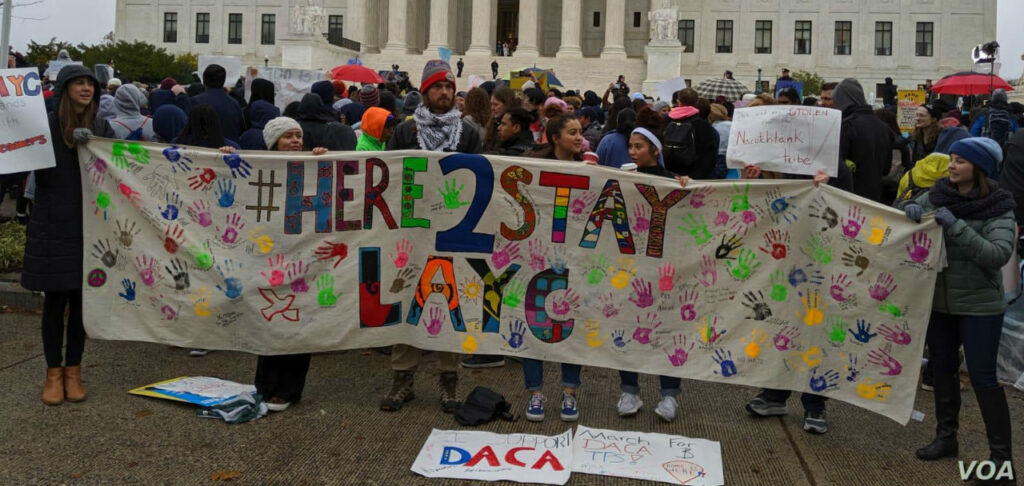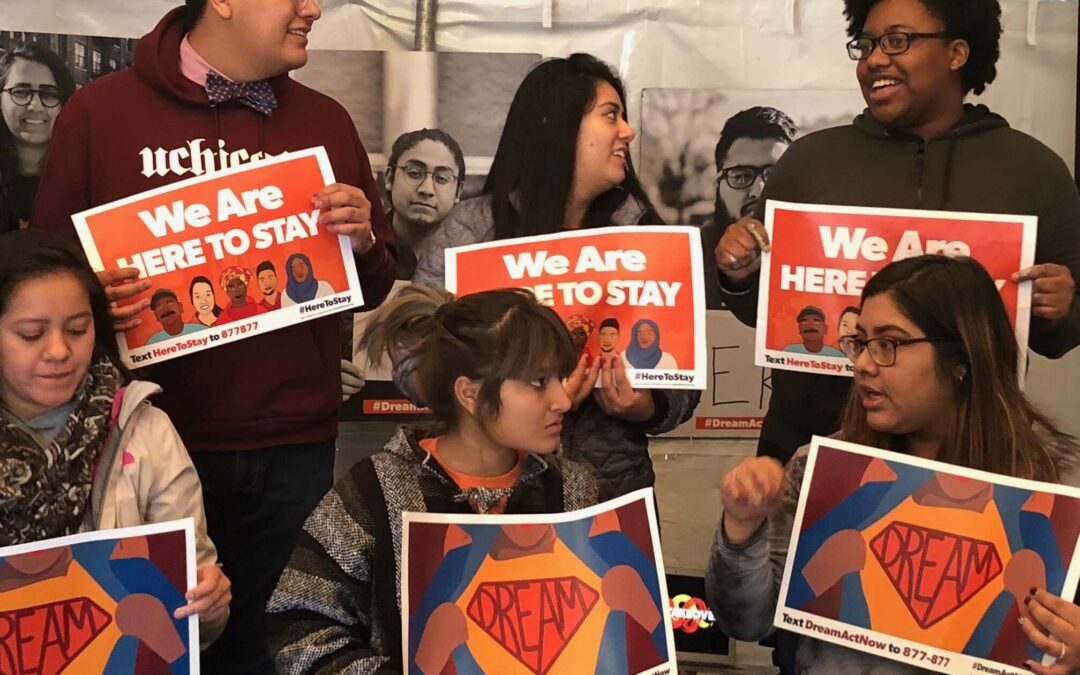The future of some 700,000 immigrants hung in the balance as the United States Supreme Court decided in June 2020 whether it would allow the termination of the Deferred Action for Childhood Arrivals (DACA) program to proceed. Fortunately for the migrants, the Court decided on June 18 the program should continue for now, allowing them to remain in the country and work legally for the time being.
Begun in 2012, DACA provided temporary protection from deportation for foreign-born persons who entered the United States as children and without proper documentation. Among the direct beneficiaries are an estimated 60,000 Central Americans including Daniel López, a young Guatemalan man born in Huehuetenango, Guatemala. Daniel came to the United States with family when he was six years old and has called Grand Rapids, Michigan his home ever since. He is proud of his Guatemalan and indigenous heritage and hopes to contribute to his homeland in the future.
When he entered the DACA program “a weight lifted from my shoulders,” he said. It opened many doors for him, including improved educational and work opportunities. When he received his DACA work authorization, he could access more fulfilling jobs – initially as an illustrator. He also received his bachelor’s degree in sociology from the University of Michigan. Most recently, he completed a Public Policy Fellowship at the Congressional Hispanic Caucus Institute where he helped prepare for congressional hearings on undocumented immigrants in detention and deported veterans.
Ironically, the Trump Administration’s decision to suspend the DACA program in 2017 came on his first day at the University of Michigan. He was overwhelmed with contradictory feelings. “One of the best days of my life turned into one of my worst,” he said in a phone interview. He has lived on a rollercoaster of emotions since then—both hopeful and fearful of what the Court might decide. He is aware that the Supreme Court’s decision does not permanently resolve his legal status but he is hopeful that the November 2020 elections will bring about a change that will lead to new legislation allowing him and fellow DACA recipients a long-term solution. He would like to return to Guatemala some day and thinks about how he can make contributions to his country of origin.
The DACA program emerged after a decade of failed negotiations in the U.S. Congress to pass the Dream Act, a law that would provide a pathway to citizenship for beneficiaries. The Obama administration announced the DACA program in June 2012 as a stopgap measure: DACA did not provide a permanent solution, but it would protect those who would have been covered by the Dream Act from deportation for up to two years, as long as the beneficiaries continued to comply with the program’s multiple requirements.
Among these were: age requirements—applicants needed to be under the age of 31 on June 15, 2012 and have entered the U.S. before their 16th birthday; residency requirements—applicants need to have lived in the U.S. continuously since June 15, 2007; and education or service requirements—applicants must be in school or have a high school diploma or GED, or be an honorably discharged veteran of the U.S. Coast Guard or Armed Forces. Moreover, applicants with criminal records or who were considered to pose a threat to national security or public safety were not eligible for DACA.
The protection that DACA provided was limited. It shielded a recipient from deportation and allowed them to apply for a work permit (and in some states, a driver’s license), but the protection was only valid for two years. After those two years, the protection could be renewed—but DACA would not provide a path to permanent residency or citizenship.
In September of 2017, the Trump administration decided to end the DACA program. It would not take away valid DACA statuses (which would expire in the following two years anyway), but it also would not accept new applications or renewals, or requests for work permits for DACA recipients either. Advocates filed legal challenges against this decision, and the government asked the Supreme Court to take up the case. In the meantime, several courts throughout the country decided that DACA recipients should be allowed to renew their status. However, no new applications have been accepted since September 2017.
The Supreme Court of the United States issued its decision on June 18, 2020 and officially halted the Trump administration’s attempts to end DACA. The Court did not rule on the legality of the DACA program itself—although the four Justices in the minority indicated in their dissent that they believed the DACA program itself is illegal—rather they only examined whether the Trump administration had followed the proper procedures when it terminated DACA. The Court found that it had not done so. The Trump administration had not provided sufficient justification to end DACA.
As a result, the government needs to continue processing DACA renewals, as well as accept new applications. However, the Supreme Court’s narrow decision also means the government can still terminate DACA if it follows the proper procedures. Only a new immigration law would provide a permanent solution.
Given the procedural nature of the Supreme Court’s decision, the issue of DACA’s legality remains unresolved. The Trump administration has already announced that it will begin the process of suspending DACA once again, providing the justifications and observing the procedures the Court found lacking in the Administration’s original decision. To achieve a permanent solution, the U.S. Congress would have to pass a new immigration law—something that President Obama urged Congress to do when he initially announced DACA. However, current polarization in Congress makes it unlikely that the U.S. Congress will even debate the issue before the November elections, placing the long-term fate of DACA recipients in the results of the upcoming presidential and congressional elections.
Whatever the outcome of those elections, a long-term solution for DACA recipients may take much longer, as there will be other important competing priorities before the President and Congress: the ongoing public health crisis due to the Covid-19 pandemic, the resulting economic collapse, and public demands for addressing the systemic racism impacting policing throughout the country, to name a few.
The Seattle International Foundation (SIF) believes it is essential to respect and protect the rights of migrants, and to support those who are fighting for those rights. We have conducted analyses about policies to protect migrants’ rights and have advocated for the protection of these rights, and we support various organizations that investigate Central American migration and show its human impact. SIF also supports organizations that work on addressing so-called push factors for migration: those conditions that make people leave their countries of origin. Our work focuses on strengthening rule of law and civil society organizations in Central America, so that there is good governance and equity for all.
Eric L. Olson, Director of Policy in DC
Mirte Postema, Project Manager

voanoticias.com




